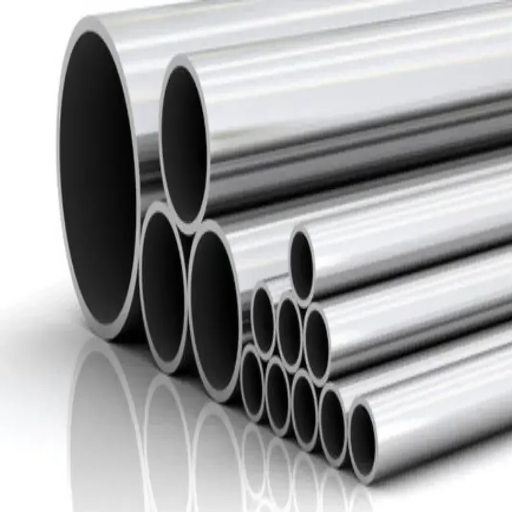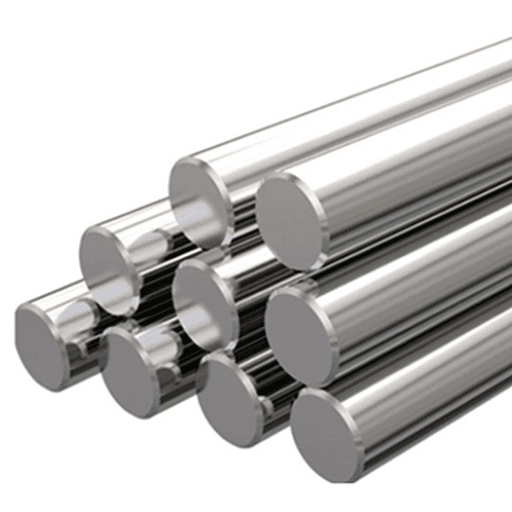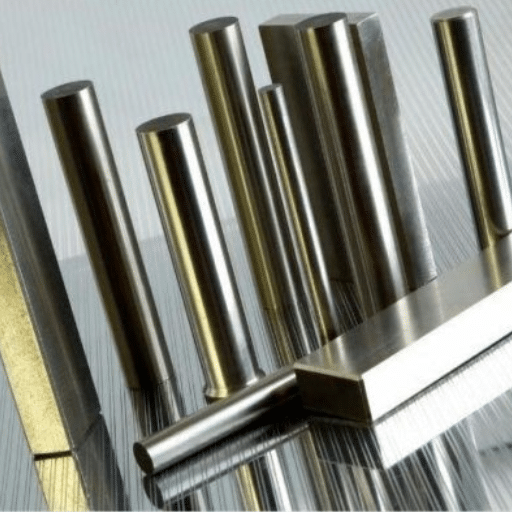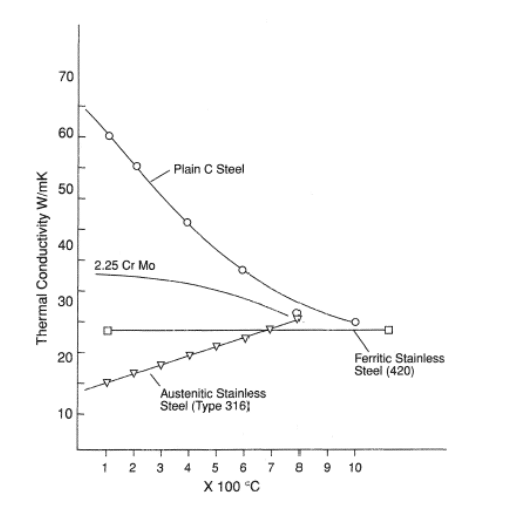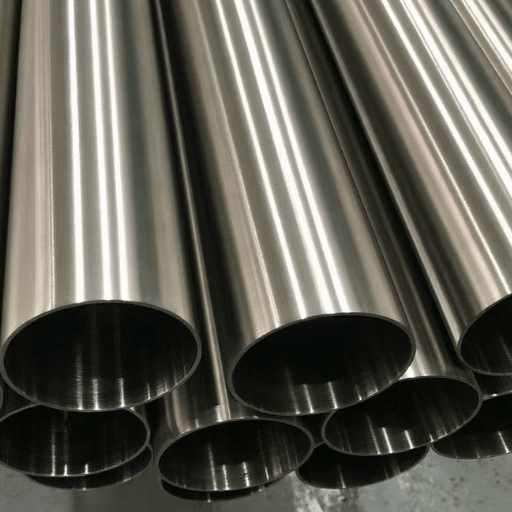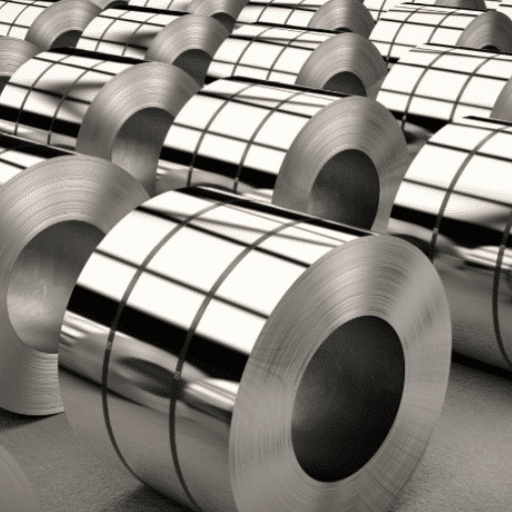Stainless steel is a crucial material across numerous industries, prized for its durability, corrosion resistance, and versatile applications. However, not all stainless steel is created equal. Two of the most widely used grades—304 and 410 stainless steel—offer distinct characteristics and advantages that make them suitable for different applications. Whether you’re designing components for industrial machinery, constructing architectural structures, or manufacturing kitchen equipment, understanding these differences is essential to selecting the right material for the job. This article will provide a detailed comparison of 304 and 410 stainless steel, helping you make informed, performance-driven decisions for your specific needs.
What are the Key Differences in Stainless Steel Grades?
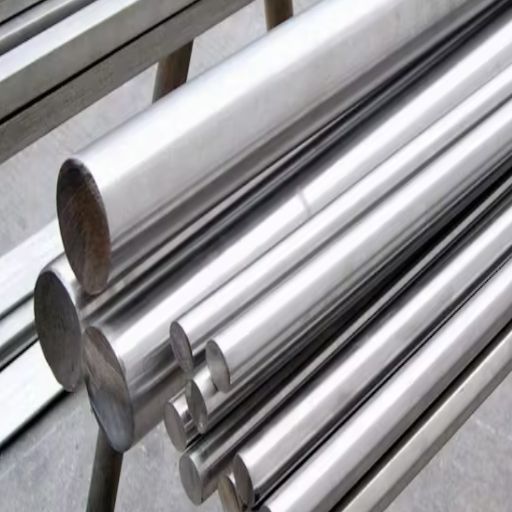
Composition of 304 Stainless Steel
304 stainless steel is an austenitic alloy with iron, chromium, and nickel as its base components, containing roughly 18% chromium and 8% nickel, which provides great corrosion resistance and durability. The alloy also contains small amounts of carbon, manganese, silicon, and other elements, which help improve its mechanical properties.
Chromium 304 stainless steel assists in creating a passive oxide layer on the metal surface, giving it great oxidation and rust resistance. Nickel, acting as a stabilizer, aids in toughening and strengthening the steel within a level of temperature range. These traits jointly contribute to making 304 stainless steel popular in industrial and consumer applications.
Further, 304 stainless steel is non-magnetic in the annealed state and is noted for its exceptional fabrication and welding characteristics. Its resistance to harsh environments, attention-grabbing price, and non-magnetic properties make 304 stainless steel the most wanted material for food processing equipment, chemical containers, and other kitchenware.
Properties of 410 Stainless Steel
410 stainless steel is a martensitic chromium alloy that possesses remarkable strength and wear resistance. This alloy is known for its exceptional hardness post heat treatment, thus making it ideal for applications that are designed to endure mechanical stresses. Its corrosion resistance, although moderate, does not compare to austenitic counterparts like 304. The degree of oxidation and rust it’s subjected to heavily depends on how rough its surface finish is and the environmental conditions.
410 stainless steel can be depended on for its diverse applications in heat treatment. It can be cooled and then reheated, giving it the ability to be tempered or annealed, which changes its mechanical features and makes it more useful in different fields. Alongside these benefits, the alloy’s tensile strength and impact resistance can be greatly enhanced. This makes 410 stainless steel fit for structural parts and tools such as fasteners, valves, and cutlery.
410 stainless steel is a durable choice in areas where exposure to aggressive chemicals or salt water is limited, but its corrosion resistance weakens in highly acidic or chloride-rich environments. Its ease of machining and cost effectiveness make it appealing to industries such as aerospace, automotive, and manufacturing. Its resilience makes it ideal for high-performance and tough conditions. Proper upkeep and surface treatments can enhance its lifespan further.
Comparing 304 and 410 Stainless Steel
Both 304 and 410 stainless steels have distinct compositions and properties, which make them suitable for different applications. 304 stainless steel is an austenitic alloy type with relatively high chromium and nickel, which enhances its moisture and chemical corrosion resistance. Its non-magnetic property, which excels in weldability and formability, makes it the most preferred stainless steel used for kitchen appliances, food processing equipment, and chemical containers.
In contrast, 410 stainless steel is a martensitic alloy type with relatively high carbon and lower chromium compared to 304. This unique composition results in a stainless steel with 410’s greater strength and hardness, but it makes it extremely vulnerable to corrosion in very aggressive or acidic environments. 410 is magnetic and is used for structures that have to withstand great wear while being exposed to some corrosive conditions, like cutlery, valves, and pumps.
Choosing between the two types of stainless steel should be guided by the environment and functional requirements. In circumstances where there is a need to manage costs, while machining and enhancing corrosion resistance, 304 is ideal. Inversely, if high mechanical strength and considerable bulk wear resistance are priorities, using 410 stainless steel would be best. Careful consideration of the environment and application promotes proper material selection to ensure optimum performance and longevity.
How Does Corrosion Resistance Differ in 410 and 304?
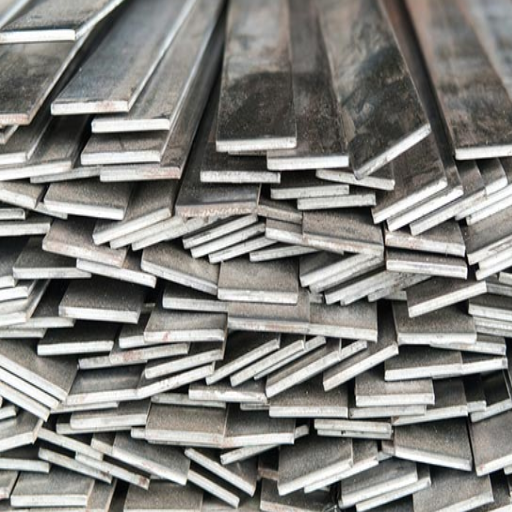
Superior Corrosion Resistance of 304
The high corrosion resistance characteristics of 304 stainless steel are due to its chromium and nickel content, which together form a layer of passive oxide that defends the material from corrosion. This passive oxide layer combats oxidation and staving off rust in most atmospheric and mild chemical environments. 304 stainless steel is especially suited for environments with moisture or food-grade acids, thereby making it preferred for food processing, pharmaceuticals, and marine industries.
Pitting and crevice corrosion are significantly lower for class 304 compared to 410, particularly for 304 exposed to chlorides. 410 is likely to experience localized corrosion. This variation is measurable as 304’s resilience to enduring humid and saline conditions is substantial, while 410’s surface quality deteriorates over time. For long-exposed, harsh, or corrosive environments like coastal architectural structures or chemical storage tanks, 304 is a more dependable material option.
With frequent maintenance and replacement being less of a concern due to the superior corrosion resistance characteristics of the steel, the efficiency of operations and associated costs for construction, industrial, and consumer applications are greatly reduced.
Impact of Chromium and Nickel Content
The stainless steel alloys’ chrome and nickel constituents influence their Strength, Ductility, as well as Corrosion Resistance. Chrome acts as the principal alloying element and forms a passive oxide layer on the surface of the steel, protecting it from oxidation and corrosion.8 Increasing the chromium content improves this protective layer and enhances the material’s use in aggressive environments. Take, for example, certain grades of 304 stainless steel, which increase to 1820% chromium, allowing them to resist corrosion effectively under many conditions.
About the alloy’s properties, nickel contributes primarily to the structural backbone of the alloy, as well as providing some resistance towards chemical attacks. Nickel improves the toughness of the alloy by stabilizing the austenitic structure and greatly increases its ductility, even at low temperatures. Those high in nickel, like 316 stainless steel, which has about 10-14% nickel, perform much better in marine conditions or chemical processing and have much stronger resistance to corrosion from chlorides and acids.
The combination of nickel and chromium in stainless steel alloys guarantees a certain level of strength while also providing ease of tailoring for diverse industrial purposes. Furthermore, these constituents assist in the alloy’s resistance to pitting, crevice corrosion, and stress corrosion cracking, all of which are exacerbated by aggressive operational environments. Maintaining this precise balance between the two allows engineers to maximize the alloy’s longevity and reliability in a particular context.
Wear Resistance and Longevity
The wear resistance and lifespan of stainless steel alloys is vital to their performance, especially in domains with intense pressures like aerospace, chemical processing, and maritime uses. The stamina of such materials is due to the alloy’s hardness and the protective oxide layer that forms on the chromium, which acts as a barrier against environmental attack. This passive layer can barely be scratched and still repair itself, provided there is adequate oxygen to refuel the alloy surface with oxygen. When coupled with sophisticated mineralurgical procedures like cold working or special heat treatments, the capabilities to resist erosion and environmental wear are increased dramatically.
Stainless steel alloys’ microstructural features further increase their resistance against wear. For instance, the martensitic grades with high carbon content tend to have higher levels of hardness, which helps decrease material loss due to abrasive or adhesive wear. Moreover, surface engineering methods PVD of hard coatings and nitriding, can complement or augment traditional techniques aimed at improving surface strength. Such innovations protect the components and the systems from repetitive mechanical loadings and abrasive wear performed during operational cycles.
Service life is always connected to lifecycle metrics, which include fatigue life and corrosion resistance. About alloy design, this means that the choice of alloy composition and surface treatment performed is one of the critical elements of the design process. For example, duplex stainless steels perform better in marine applications because of their higher strength and corrosion resistance, resulting in longer service life compared to conventional austenitic grades. Careful control of all production stages coupled with the effective tailoring of alloy properties to intended use, enables engineers to significantly increase the operational life and reduce maintenance expenses of stainless steel parts.
Are 410 and 304 Magnetic?
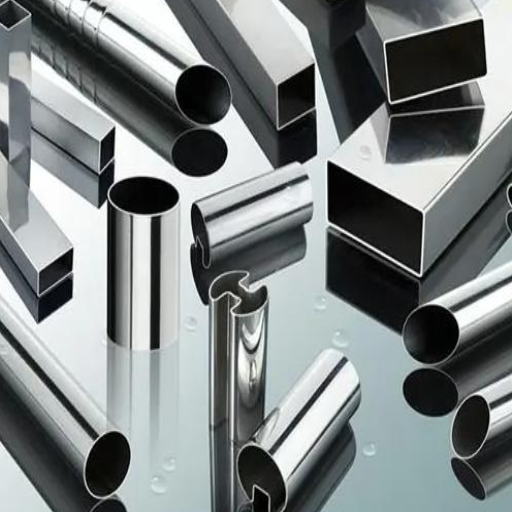
Magnetic Properties of 410 Stainless Steel
The magnetic characteristics of 410 stainless steel stem from its chemical composition, together with the property’s martensitic crystal structure. This grade contains iron, which provides strength and, due to its ability to undergo cooling, moderate corrosion resistance, from the martensitic phase. Unlike austenitic stainless steels with no magnetism, 410 becomes magnetic due to its body-centered cubic (BCC) crystalline structure.
Solenoids, relays, and magnetic separation devices utilising magnetic bearings are some of the numerous applications for their magnetic responsiveness. 410 stainless steel has a moderate coercive force, residual magnetism, and draws strong magnetism. The absence of tempering and precise carbon and chromium concentrations yields high demagnetization resistance and moderate heating resistance while maintaining moderate temper resistance. Specific drastic heating and other treatments allow fine-tuning of these measurements for industrial demands.
High-stamina operational demands require an understanding of magnetic saturation, its surrounding conditions, and behavior. Steel undergoes thorough mechanical tests to determine if it meets the challenging magnetic requirements without damaging corrosion resistance. Engineers seeking components with precise magnetic bearing components and flexible construction find comfort in 410 stainless steel’s adaptable nature.
Magnetism in 304 Stainless Steel
The 304 stainless steel is primarily considered non-magnetic because of its austenitic crystal structure, which is devoid of any magnetic characteristics. This is because nickel and chromium give so much more jharion to the chromium bonds and keep austenite stable at room temperatures. However, 304 steel could possess weak magnetic properties under some circumstances. For example, some areas within wrought steel can change from an austenitic structure to a magnetic martensitic phase due to severe cold work or deformation.
In cold worked 304 stainless steel, the extent of magnetism is proportional to the level of deformation and the alloy composition. It has been found that the martensitic transformation starts at heightened strains, increasing the ferromagnetic response. However, the magnetic permeability is still lower than the ferritic or martensitic stainless steels.
The 304 stainless steel is also subject to heat treatment and welding which can change the magnetic properties. Faster cooling or heating can lead to some minor changes in finer structures during the workpiece which affect its magnetic capabilities. If non magnetic is required, other options could be more preferable like 316 steel which has more Mo.
Applications Based on Magnetic Properties
The magnetic characteristics of stainless steels have great importance for their appropriateness for use in specific applications in different industries. For instance, ferritic stainless steels are frequently used in electromagnetic components like solenoid cores and transformer assemblies because of their strong magnetic permeability, low electrical resistivity, and inherent magnetic traits. On the other hand, austenitic grades that generally do not possess magnetic features are more desirable in places that need high susceptibility to electromagnetic field interferences, like medical imaging devices such as MRI machines.
Applications like turbine blades and surgical instruments employ martensitic stainless steels because of their moderate magnetic properties, superior mechanical strength, and because they pose a unique blend of hardness, wear resistance, and easy machining. Additionally, duplex stainless steels, because of their moderate magnetic properties, are more commonly preferred for use in industrial operations in chemical plants and oil refineries because of their ability to withstand very corrosive conditions and manipulations from strong magnets.
These differences also highlight the refinement that must go into selecting a material based on its intrinsic magnetic behavior, while ensuring optimal application performance, deployment safety, and longevity in more challenging operational conditions.
What Are the Heat Treatment Capabilities of Each?
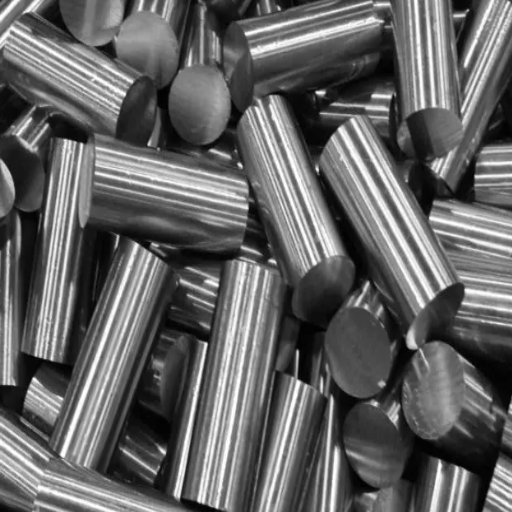
Heat Treatment Process for 410
Heat treatment plays an important role in the enhancement of the mechanical properties of 410 stainless steel, especially its hardness, strength, and corrosion resistance. Its features also need to be aligned with the requirements of the demanding applications, such as those in the petrochemical and industrial machinery fields, needing to execute a precisely tailored heat treatment cycle suitable for this martensitic grade stainless steel.
The first step is annealing, where the part is heated to a temperature of 1500°F to 1650°F (815°C to 900°C) and then allowed to cool slowly within a furnace or similar environment to relieve some of the internal stresses and improve its machinability. This is then followed by hardening, which entails heating the 410 material to bone-like-hard 1800°F to 1950°F (980°C to 1065°C). Sustaining this temperature ensures that certain changes to the steel’s microstructure occur so that it is optimized for quenching.
The final, most decisive step is tempering after having quenched to room temperature with air or oil. The tempering step fixes the degree of hardness of the martensitic material while controlling the brittleness and, therefore, the overall level of toughness. From the application point of view, 410 stainless steel is known to benefit from tempering between 400°F to 1400°F (205°C to 760°C), lower temperatures resulting in higher hardness, while higher temperatures improve toughness and corrosion resistance.
The accurate regulation of these factors guarantees that the steel will function dependably in highly challenging and corrosive environments, as well as in applications subjected to significant wear. Following the appropriate standards for heat treatment improves the material’s performance and ensures uniformity as well as consistency which is very critical in harsh conditions.
Effect of Heat Treatment on 304
The properties of 304 stainless steel (an austenitic alloy renowned for its corrosion resistance and formability) are profoundly shaped by its heat treatment. 304 stainless alloy’s strength, hardness, and environmental resistance (factors critical to alloy performance) change due to microstructure alteration on heating. Generally, the most common form of treatment 304 stainless steel undergoes is annealing, which is executed between the 1850°F (1010°C) and 2050°F (1120°C) range and is followed by a rapid temperature drop, frequently achieved by immersing the metal in water. This treatment helps in the dissolution of carbides, homogenization of the detrained austenitic framework, and relaxation of persisting stresses, which tends to increase the ductility of the metal while maximizing the ability to resist corrosion.
Nonetheless, during the process of heat treatment, holding the specimen for too long is critical to avoid the 800°F (425°C) to 1500°F (815°C) window. Those parameters are quite dangerous since they also provide a means for sensitization of the alloy, which is the precipitation of chromium carbides along grain boundaries, reducing the chromium content because of its aggressive intergranular attack corrosion. For low metallurgical insults during heat treatment where weldability is a priority or lengthy durations of elevated temperatures pose concerns, most substitutions are 304L variants with lower carbon content or 321 stainless steel, which provides stabilization.
To preserve the structure and dependability of the material in critical applications, controlled heat treatment processes in compliance with industry standards are required. This guarantees that the 304 stainless steel can perform efficiently even in hostile conditions, holding onto the mechanical properties and surface stability necessary for the intended use.
Which Grade is Better for Food Processing Applications?
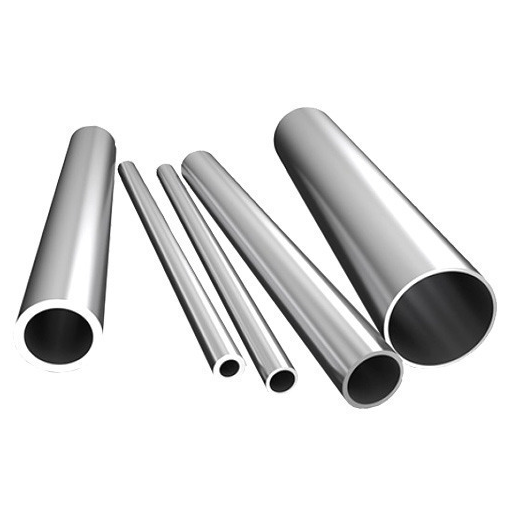
Durability and Resistance in Food Environments
304 stainless steel is highly regarded in the food processing industry for its resistance to corrosion and durability, mainly because of its chromium content, which helps form a protective oxide layer that defends against rust and corrosion. While it can endure exposure to acidic food and cleaning substances usually used in food processing, durable chloride cleaning methods can be a risk, as prolonged exposure to harsh chlorides can weaken its protective resistance.
Brine and seawater processing requires stronger construction materials, a need that 316 stainless steel satisfies with its higher molybdenum content which significantly improves resistance against pitting and crevice corrosion. This aggressive resistance combined with its durability makes 316 stainless steel an optimal choice, especially when processing brined foods or exposed to salty and chlorinated environments. Although both steel grades are considered food-safe, the increased cost of the 316 grade is often deemed worthwhile in scenarios where its exceptional resistance to aggressive elements is essential.
As a rule of thumb, choosing the best grade of stainless steel for food processing equipment is determined by the particular environmental factors and materials it will interact with. Stainless steel 304 and 316 both meet the regulatory norms for food safety, including NSF and FDA, so they can be used in various applications.
Benefits of 304 Stainless Steel in the Food Industry
304 stainless steel or A2 stainless steel has earned its place in the food industry due to its unmatched combination of durability, corrosion resistance, and cost effectiveness. Its chromium content is approximately 18%, and nickel content is about 8%, both of which help oxidation and rusting in moderately corrosive environments. This is ideal for food-grade applications because it is very important to maintain sanitation and hygiene.
One major advantage of 304 stainless steel is that it can be easily cleaned and maintained. The surface structure is smooth, which reduces the risk of food and bacteria entrapment, thus supporting the stringent cleanliness requirements needed in areas where food is prepared and processed. Further, the material is non-reactive, which indicates a wide spectrum of food products can be used freely without contamination or change in taste.
Most notably, 304 stainless steel can withstand high temperatures, which is important for use in ovens, grills, and heat exchangers. Its considerable mechanical strength enables it to tolerate mechanical strain and abrasion, thus extending its service life and reducing replacement costs—both of which are essential for cost control in industrial food processing.
304 stainless steel is used in various industries because it meets important food safety regulations set by NSF and the FDA. This means the material compliance supports the manufacturers and consumers trust.
References
-
Stainless Steel 304 vs. 410: Which Is Right for Your Project? – This source discusses the corrosion resistance, composition, and applications of both grades.
-
300 Series Stainless Steel vs 400 | 304 vs 410 | SFS USA – This article compares the cost, properties, and uses of 304 and 410 stainless steel.
-
410 Stainless Steel vs 304: Properties, Treatment … – This source provides a detailed breakdown of the physical properties, thermal conductivity, and hardness of both grades.
Frequently Asked Questions (FAQ)
Q: What are the primary differences between 410 and 304 stainless steel?
A: The differences between 410 and 304 stainless steel mainly lie in their composition and properties. 304 stainless steel, part of the 300 series, offers excellent corrosion resistance due to its higher nickel content, making it suitable for applications requiring better corrosion resistance. On the other hand, 410 stainless steel, part of the 400 series, has high strength and resistance to wear, making it suitable for applications where these properties are prioritized.
Q: How does 304 stainless steel compare to 410 stainless steel in terms of corrosion resistance?
A: 304 stainless steel offers better corrosion resistance compared to 410 stainless steel. This is because 304 is part of the 300 series stainless steel, which contains higher levels of nickel and chromium, providing it with excellent corrosion resistance. 410 stainless steel, while still resistant, is more susceptible to corrosion than 304 and is better suited for applications where high strength is more important.
Q: Is 410 stainless steel suitable for applications requiring high strength?
A: Yes, 410 stainless steel is suitable for applications requiring high strength. It provides excellent resistance to wear and can be hardened through heat treatment, making it ideal for applications where strength and durability are essential.
Q: What are some common uses for 304 and 410 stainless steel?
A: 304 stainless steel is commonly used in kitchen equipment, chemical containers, and architectural applications due to its excellent corrosion resistance. 410 stainless steel is used in applications requiring high strength and wear resistance, such as cutlery, turbine blades, and valves.
Q: Can both 410 and 304 stainless steel be used in environments prone to galvanic corrosion?
A: While both types of stainless steel can be used in environments prone to galvanic corrosion, 304 stainless steel is slightly better suited due to its excellent corrosion resistance. However, care should be taken to prevent galvanic coupling with dissimilar metals, which can lead to accelerated corrosion.
Q: How does the chromium content differ between 304 and 410 stainless steel?
A: Both 304 and 410 stainless steel contain chromium, which contributes to their corrosion resistance. 304 stainless steel typically contains about 18% chromium, whereas 410 stainless steel contains around 11.5% to 13.5% chromium, making 304 more resistant to corrosion.
Q: What is the role of nickel in 304 stainless steel?
A: Nickel in 304 stainless steel enhances its corrosion resistance and provides superior formability and weldability. The presence of nickel, along with chromium, makes 304 stainless steel part of the 300 series, known for its excellent corrosion resistance.
Q: Are there any similarities between 304 and 410 stainless steel?
A: 304 and 410 stainless steel are both iron-based alloys that contain chromium, giving them some level of corrosion resistance. They are both used in various industrial applications, though they are chosen based on specific requirements such as corrosion resistance or strength.
Q: What should be considered when choosing between 304 vs 410 stainless steel for a project?
A: When choosing between 304 vs 410 stainless steel, consider the specific requirements of the application. If excellent corrosion resistance is needed, 304 is the better choice. If high strength and wear resistance are more critical, 410 stainless steel is more suitable.

